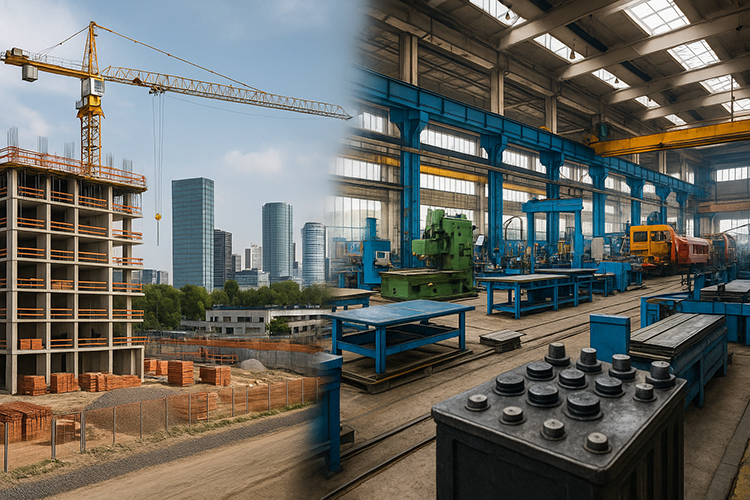Construction Costs Edge Higher as Poland’s Industry Struggles with Uneven Output
Poland’s construction and manufacturing sectors are moving in different directions, according to the latest data from Statistics Poland. Costs for construction and assembly works continued to rise in July, while industrial production in August showed wide disparities between growth industries and those under pressure.
In the construction sector, prices increased across building works, civil engineering, and transport infrastructure. Road and bridge projects saw the sharpest cost escalation, underscoring the continued strain on public budgets and private developers. Although the pace of inflation in construction inputs has slowed compared with the spikes of 2022 and 2023, higher labor and material expenses remain a significant challenge for investors, particularly in large-scale residential and infrastructure projects.
Industry data from August highlight Poland’s shifting production base. Out of nearly 500 surveyed product categories, 208 reported higher output, while 257 fell. Strong performers included optical fibre cables, women’s clothing, lead-acid batteries, and public transport vehicles. These gains suggest resilience in areas linked to digital infrastructure, consumer demand, and electrification.
But weakness in core manufacturing continues to weigh heavily. Passenger car output dropped by more than 60 percent in the year to August, and production of road tractors for semi-trailers collapsed by over 80 percent. Traditional materials such as cotton fabrics and man-made textiles also recorded steep declines.
Sales figures followed a similar pattern. Products such as cider, chocolate goods, and waterproof footwear recorded significant year-on-year increases, while sales of aluminium doors, grape wine, and cotton fabrics fell.
For real estate and investment markets, the data carry a mixed message. Rising construction costs may delay projects or force tighter margins, while uneven industrial performance highlights both risks and new opportunities. On one hand, weaker automotive demand undercuts logistics expansion tied to vehicle supply chains. On the other, growth in fibre optic cables, batteries, and public transport vehicles could spur demand for modern industrial and storage facilities.
Economists warn that Poland’s economy remains highly sensitive to European demand and global supply chain disruptions, but the strength of niche industries provides a degree of balance. For developers and investors, the challenge will be navigating rising input costs while positioning portfolios to capture long-term growth from sectors undergoing structural expansion.
Source: GUS








